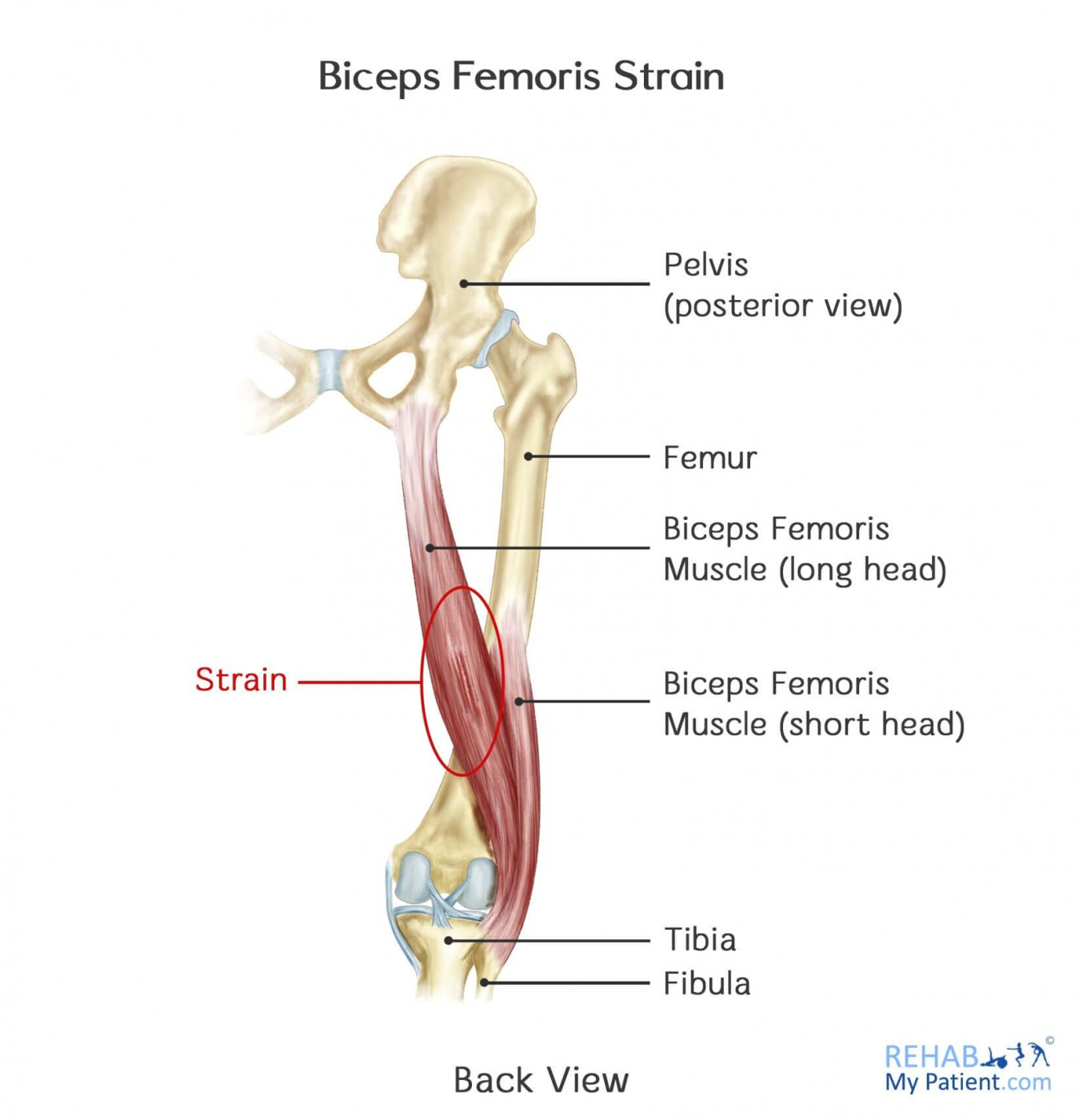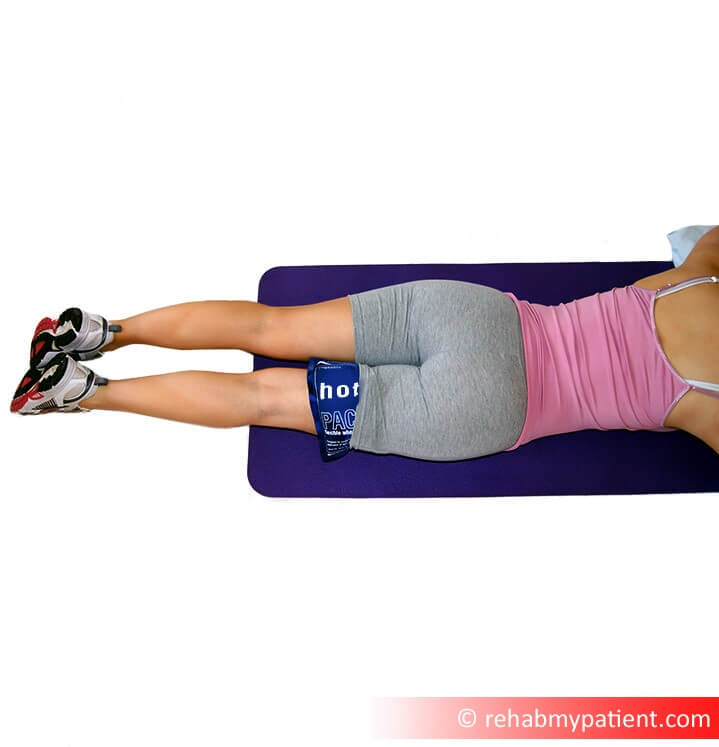
There are three large muscles in the hamstring muscle located at the back of the thigh: the semitendinosus, the biceps femoris and the semimembranosus. An individual suffering with a hamstring strain has a tearing or stretching of a hamstring muscle at the back of the thigh. Most of the time, a strain to the hamstring is caused by an injury. When it comes to a hamstring tear, it is a partial tear in the muscle. Severe injuries can cause a complete tear, which is known as a hamstring rupture.
Biceps Femoris Strain Anatomy
To understand a strain in the hamstring, it helps to have a better understanding of the thigh's anatomy. Four bones make up the entire leg: the thighbone (femur), kneecap (patella), thick bone located at the front of the lower part of the leg (tibia) and the thin bone located on the side of the lower part of the leg (fibula).
Three muscles are at the base of the thigh: the biceps femoris, semimembranosus and semitendinosus. One end of all the muscles are attached to the bottom of your pelvis, while the other is attached to the femur at the knee. Hamstring muscles are responsible for extending the hip and flexing the knee. Hamstrings are powerful flexors for the knee joint. These muscles are critical to stabilizing the knee and helping you to perform activities like running.
A typical injury to the biceps femoris occurs during sprinting (athletics, football, rugby, hockey etc.). If the muscle is not strong enough to cope with the forces going through it, the muscle fibres can tear. If this happens, the athlete will often feel a very sharp pain at the back of their thigh.

How to Treat Biceps Femoris Strain:
- Rest
Many people don’t realize the importance of rest, or they tend to ignore it altogether. Using a walker, stick or crutches is important to letting the strain recover and heal properly.
- Cold Compresses
Use ice for 5-20 minutes at a time two to three times throughout the day. Icing the area will help to reduce inflammation and pain.
- Warm Compress
After the injury occurs, avoid using anything warm for the first three days. Once the injury has a chance to settle down, you can rotate between ice and heat.

- Anti-Inflammatory Medications
Using Ibuprofen, Ketoprofen and Naproxen will help to reduce inflammation and alleviate pain. By minimizing the inflammation in the area, the pain will not be as severe. This is only recommended for a few days, or even better would be to use natural methods like ice and heat.
Tips:
- Most of the time, injury to the muscle is a result of sudden running, jumping or other activities where knee and hip flexion occur. During sprinting injury can often occur when your leg is fully extended behind you. Try to make sure your knee is not extended in such a way that your leg is put into danger.
- Injury to the leg causes an extreme amount of pain to the individual. Once an injury has occurred, it can become difficult to move your leg. Try to keep your leg straight until treatment options can begin.
- Upon examination, the physician might find the hamstring muscles tight and in a spasm. Tightening of the muscles can cause a number of other problems with the surrounding area.
- When an injury occurs, you may find that you are not able to stand. So sit down and rest for a few minutes, but gently walking around can also help too.
Exercises are useful to help heal the hamstring. In the short term, concentrate on reducing the inflammation. Massage can be used to speed up tissue repair, and prevent adhesions and scar tissue from forming. Stretching exercises can be useful if your hamstring is too short, and strengthening exercises are a must to prevent re-injury.
Zapisać się
Zarejestruj się już teraz, aby skorzystać z bezpłatnego okresu próbnego!
Zacznij korzystać z Rehab My Patient już dziś i zrewolucjonizuj proces przepisywania ćwiczeń, aby zapewnić sobie skuteczną rehabilitację.
Rozpocznij 14-dniowy bezpłatny okres próbny